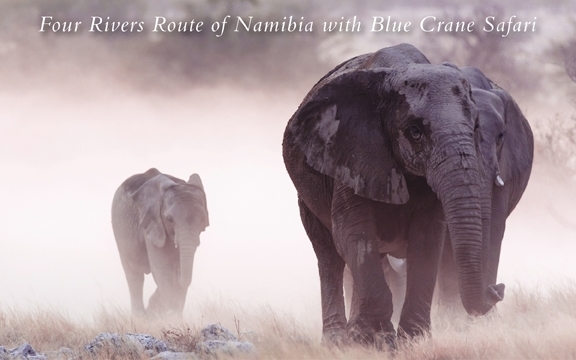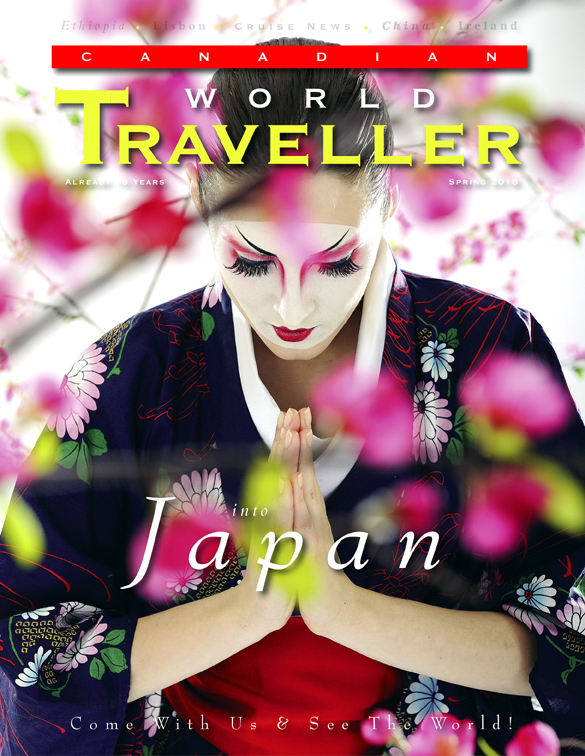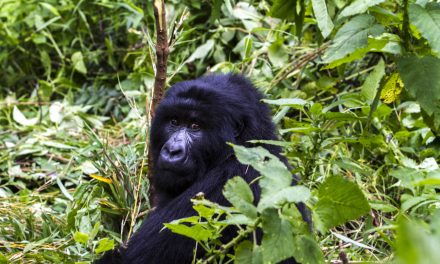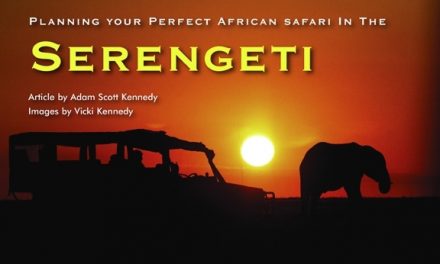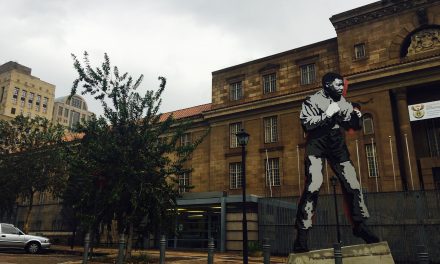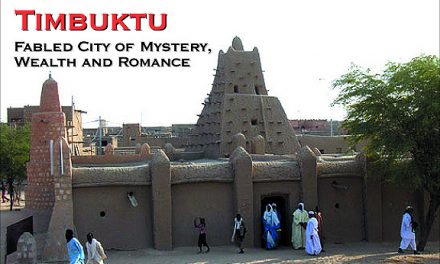Namibia
Four Rivers Route of Namibia with Blue Crane Safari
by Olivia Balsinger

When travelers picture Namibia, the southern African country that sits on the eastern coast of the continent right above South Africa, they likely imagine sprawling sand dunes of the Namib Desert that the country is so famous for. However, equally enchanting are the Zambezi and Kavango regions of the country, home to the four rivers route and named after the river systems that flow through the area, the Zambezi, Okavango, Kwando and Chobe rivers.
Known as one of the best kept secrets in Africa, I had the chance to explore the unusual water ecosystem with Blue Crane Safari Tours. And what a stunning exploration it was—with over 30 bird species, free-roaming wildlife and numerous culturally rich villages and attractions, each day provided new opportunity for discovery. And this secluded part of the world is still easy to reach—from North America, a flight on South African Airways (via Johannesburg) to Namibia’s capital of Windhoek is just a short flight away from the first river lodge, where the adventure begins.
Chobe River Camp Gondwana Collection
The Chobe River Camp sits in sublime solitude upon the banks of the Chobe River. It is the same area that forms the northern border of the Chobe National Park — a world famous reserve whose vast and varied wildlife offers extraordinary game viewing opportunities. The reserve is an ideal haven for nature enthusiasts, opportunistic particularly for bird watching. It also boasts one of the largest concentration of elephants on the entire African continent. With a little bit of patience, I saw herds of these majestic beings, as well as buffalo and antelope, pass through the grounds from the comfort of my tented chalet.
Transcendent and resplendent, the design of the camp ground draws in on the natural environment that surrounds it. In fact, the twenty chalets offered for accommodation were built by Mopane timber and canvas indigenous to the area. And while this serves a stunning aesthetic purpose, its more significant role is an environmentally conscious one. Being green is of upmost priority to the luxury complex, which uses solar energy to power its chalets.
The chalets themselves are gorgeous units that embody the conveniences of modernity with the Zen simplicity of nature. Each affords arresting vistas of the Chobe River scenery via a private deck. I would awake in exquisite comfort, taking advantage of one of the many activities offered by the camp: boarding a river boat to experience Africa from an entirely new angle and participating in a guided nature drive to learn more about the breathtaking scenery.
Camp Kwando
Just outside Mudumu National Park was the perfect site to call my temporary home, experiencing the wondrous wilderness and wildlife of Namibia’s Zambezi Region. Spectacular views over the Kwando River are unavoidable, as I spent my days in leisure and opulence from the comfort of the camp’s gorgeous chalets.
Each of the fourteen thatched roofed structures are built on poles atop the banks of the Kwando River, complete with a terrace that allows you enjoy some fishing from your private deck. The living area itself is massive with two beds fitted with mosquito nets, and en-suite open-sky bathrooms that invites nature indoors to relax and calm your spirit. Or, for upgraded accommodations, you may opt for one of the camp’s Tree Houses — six bungalows built upon stilts, with a spaces interior and awe-inspiring views of the nearby plains.
The camp also offers charming common areas, decorated with fascinating artifacts significant to the area’s indigenous culture. A spacious lounge overlooking the river makes a perfect spot to unwind and appreciate this wholly new habitat.
Camp Kwando offers guests buffet breakfast daily, assuring I had the right start to power through any enjoy all activities. For my evening meal, I savored local game meats, paired perfectly with the fresh vegetables and herbs harvested in the camp’s own garden.
Divava Okavango Resort & Spa
Located on the Okavango River, the Divava Okavango Resort is aesthetically gorgeous, with exquisite interior details all constructed with natural materials that counterintuitively complement an otherwise modern and chic motif.
Providing a perfect soundtrack to the luxurious lodge is the rafts of the Popa Falls a mere 1 km away. And if that were not tranquil enough, Divava has a top notch spa that allows you to relax, rewind, and recalibrate within a private setting overlooking one of the most beautiful, natural, well-preserved places in the world.
The resort’s twenty chalets rest on a high riverbank, giving me spectacular views to enjoy from the comfort of an enormous private deck. The interior spaces themselves are also huge, and include en suite bathrooms that have beautiful large bathtubs and a separate shower. There is also an outdoor shower for those looking to truly connect with nature more deeply. Meals are served in the resort’s restaurant, with a buffet for breakfast and a five-course meal for dinner. International cuisine is prepared to perfection and complemented with an extensive wine list. Lunch is served a la carte. Outdoor seating is available, so I enjoyed delicious, fresh meals with views of the beautiful Bagani area serving as a backdrop.
The resort offers plenty of activities to all of the different attractions close by. For instance, one may take a tour of the renowned Mahango Game Reserve to witness elephants, buffalo, lion and leopard with little effort; there is also the lesser known, but definitely noteworthy Buffalo Game Park, where you can see hippo, crocodiles, or some of the almost 400 bird species native to the area.
Hakusembe River Lodge
Hakusembe River Lodge sits at the end of a rugged gravel road, creating a mirage-like vision of bucolic romanticism: A sprawling green lawn is framed with a canopy of acacia trees, with the lodge’s luxury thatched chalets arranged around a sinewy, shimmering strip of the Kavango River. The grounds have proved a perfect setting for a romantic honeymoon getaway, but is also ideal for families or even an unforgettable stop over for your travels throughout northern Namibia.
The lodge features nine bungalows, all of which are nestled serenely amongst the grounds’ verdant trees. The balmy scent of the pristine nature outside wafts into the spacious area to create a haven of upmost tranquility. Each come with an en suite bathroom, stylish mosquito nets, and air conditioning. There are options for twin, triple, or family bungalows, the latter of which boasts two double rooms, a loft with two beds, and two bathrooms.
I frequented the floating deck, where I’d unwind completely to the distant sound of the villages across the river’s far bank, and exotic birds winding through the acacia trees. If the sun proves to strong, I’d take a stroll through the luxuriant garden to reach the lodge’s swimming pool. The facility also offers cruises on their Hakusembe River Queen, and is conveniently located next to the Mbunza cultural village — a living museum that gives fascinating insight into the traditional, pre-colonial culture of the Namibian area.
Windhoek Garden Guest House
Windhoek Garden Guest House was our last stop, a restful break from my busy itinerary and located in the center of the cultural and political capital of Namibia, Windhoek. There are a total of 28 gorgeous rooms to choose from, decorated with traditional Namibian art and rustic furniture. Each is equipped with fast WiFi, air conditioning and a private balcony or veranda.
Like me, you will fall in love with the nature, people, and culture of Africa thanks to the thorough work of Blue Crane’s excellent guides, trained with the necessary skills to provide intimate insight into the absolutely breathtaking country of Namibia.
www.namibiatourism.com.na
www.bluecranesafaris.com
Click on cover to view published article

